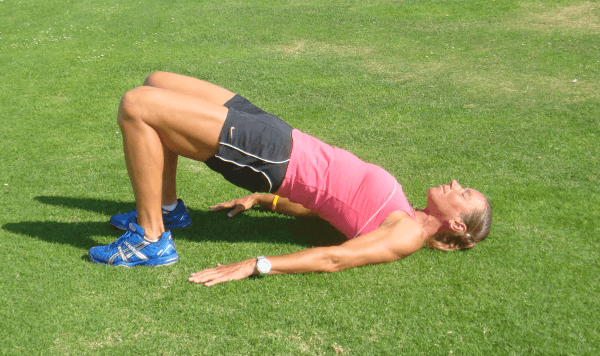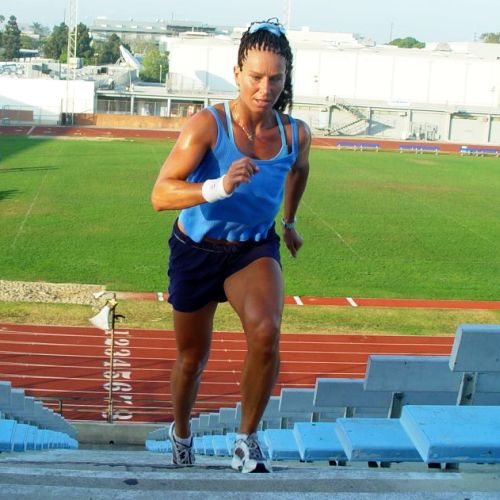The glute bridge is the simplest way to develop the often most underestimated (yet the most important) muscle in the athlete’s body: the gluteus. Beloved things has many names: the glute, booty, butt, rear, or firm behind.
The gluteus is one of the biggest muscles, consisting of gluteus maximus, medius, and minimus. Its function is a hip extension, hyperextension, abduction, and external rotation.

The gluteus assists with sprinting, jumping, twisting and changing directions—all the movements that a tennis player needs. The hip naturally hyperextends in walking, running, sprinting, and lunging, and during hip flexor stretches.
Tight Hip-Flexors Inhibit the Glute Activation
Long and functional hip flexors are absolutely crucial for the gluteus to work most efficiently, because tight hip flexors prohibit the hips from hyperextending. Before executing any glute exercises, always stretch the hip flexors. Shortened hip flexors do not allow for maximum range of motion and the hyperextension of your hips. Hold the hip flexor stretch for 60 seconds. The longer you hold the stretch, the more you relax and get deeper into the stretch. Do two sets of stretches before performing the glute bridge.
Glute exercises with straight legs activate hamstrings as well. To maximize the glute involvement, perform the glute exercises with legs bent, which keeps the hamstrings in a shortened state and stops them from assisting the gluteus.
Squats and lunges are great exercises for the entire lower body, but the glutes do not work maximally. They share the workload with the hamstrings, quadriceps, and calves. To activate your glutes fully, perform the simple, yet extremely efficient glute bridge.
Glute Bridge
Lie down on your back, bend your knees, and place your arms with the palms down by the sides of your body. Put pressure on the heels and thrust your hips high up into the air by contracting your glutes. Keep the top contraction for five seconds and return to the starting position. Perform four sets of 20 controlled repetitions. When the two-legged version of glute bridge gets easy, you can increase the difficulty either by adding extra weight on your hips, or by lifting one leg. Lift the right leg off the ground, bring the knee close to your chest, and keep it there during the entire movement. Pushing from the left heel thrust your hips as high up as possible. Keep the top contraction for five seconds and return to the starting position. Perform 15 to 20 repetitions, and then switch sides. Do four sets.

Make sure that you are not arching your back and doing all the work from the lower back. Really try to connect with your glutes and contract them maximally with each repetition.
When you get strong enough, you can put a weight/plate on your hips and work against the resistance. When you need eventually even heavier weights, use a bar with weights. To increase range of motion of the movement, put your upper body comfortably on the bench, and sink the hips down to the ground and then thrust up as high as you can, with or without the added weight on your hips.
Instructional video for glute bridge (hip thrusts)
When you develop strong glutes, you will experience fewer problems with your lower back, knees, and ankles. Your movement on the court will be smooth and fast, and your tennis game will improve significantly.
Moreover, the booty will look great!


